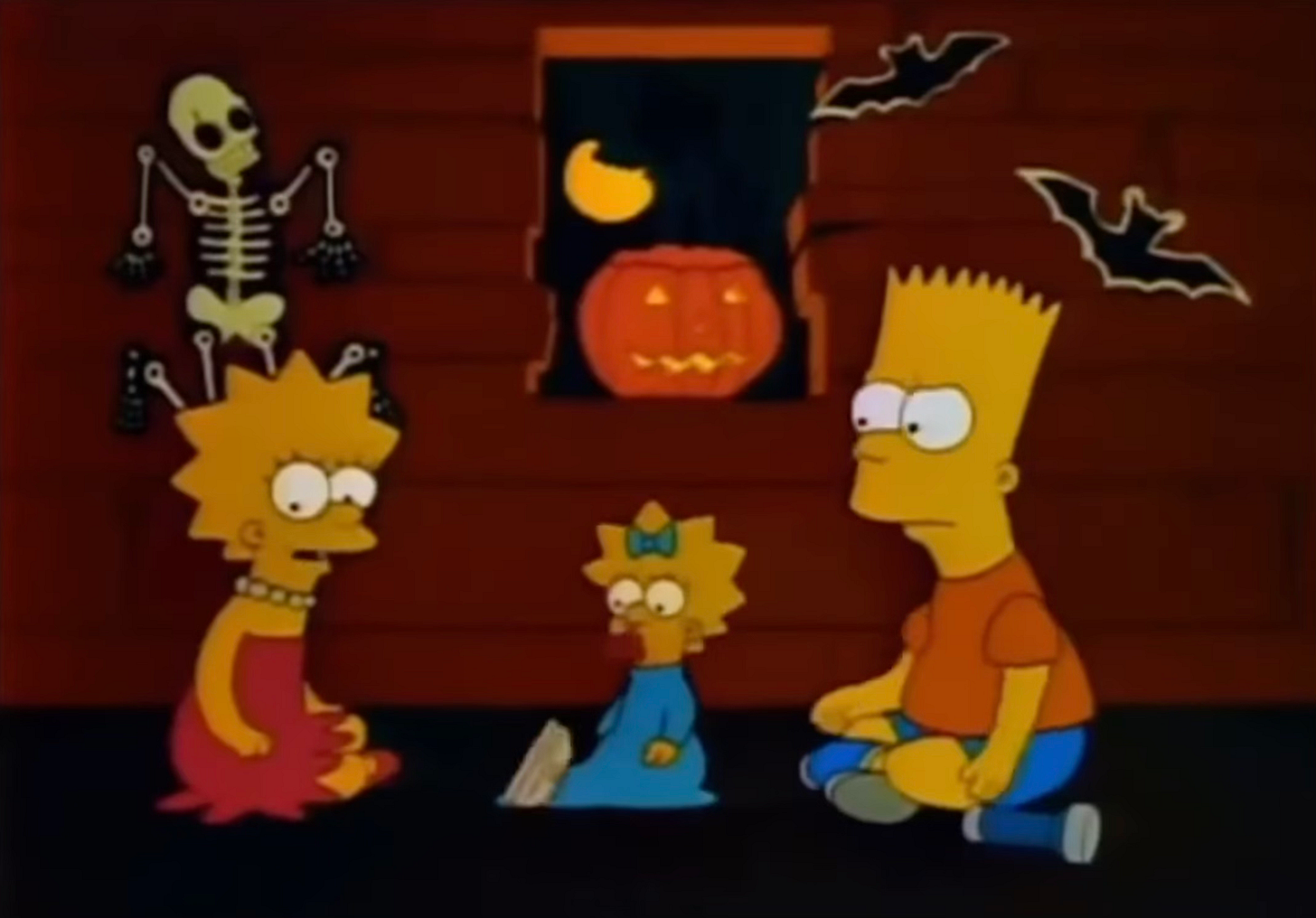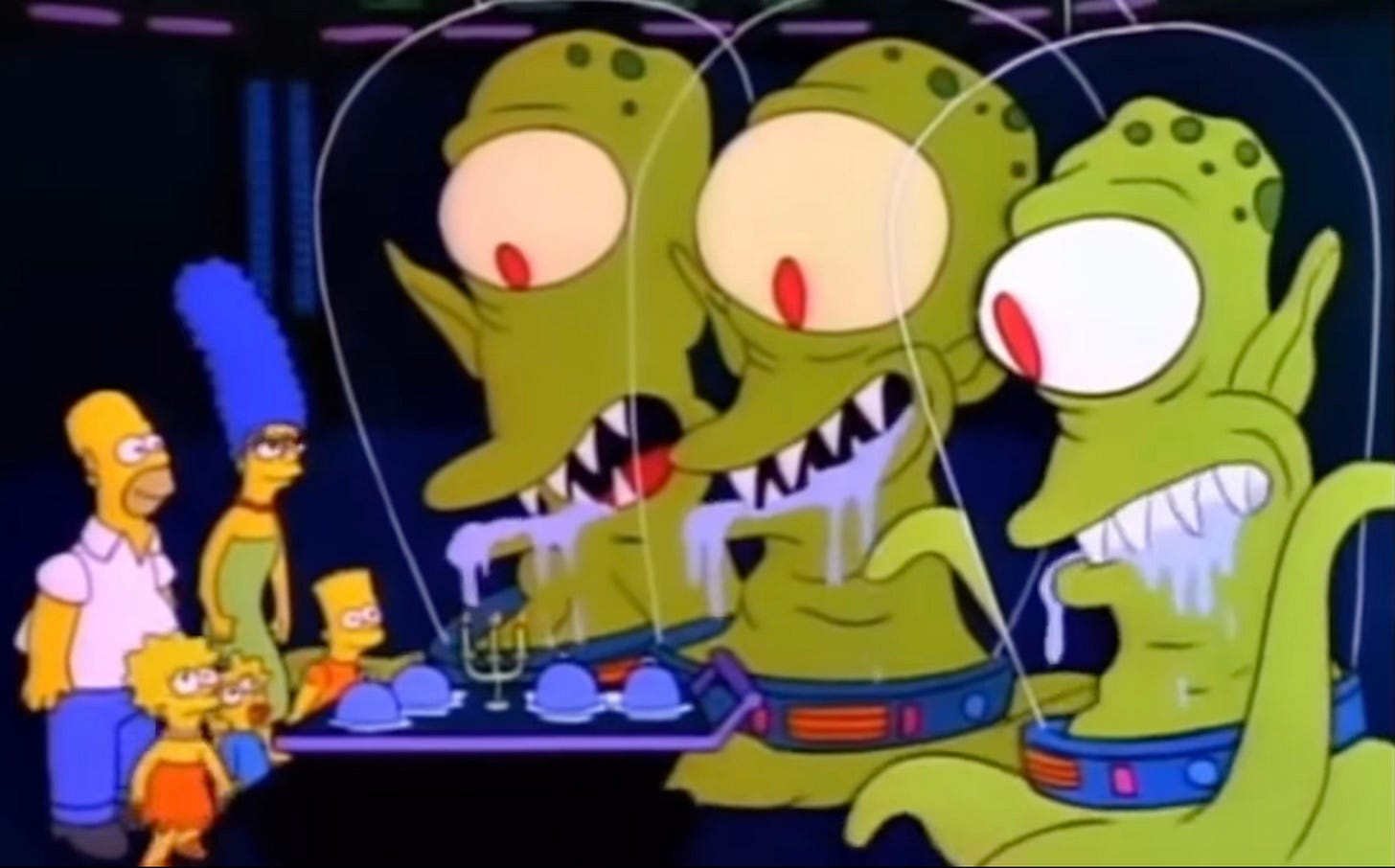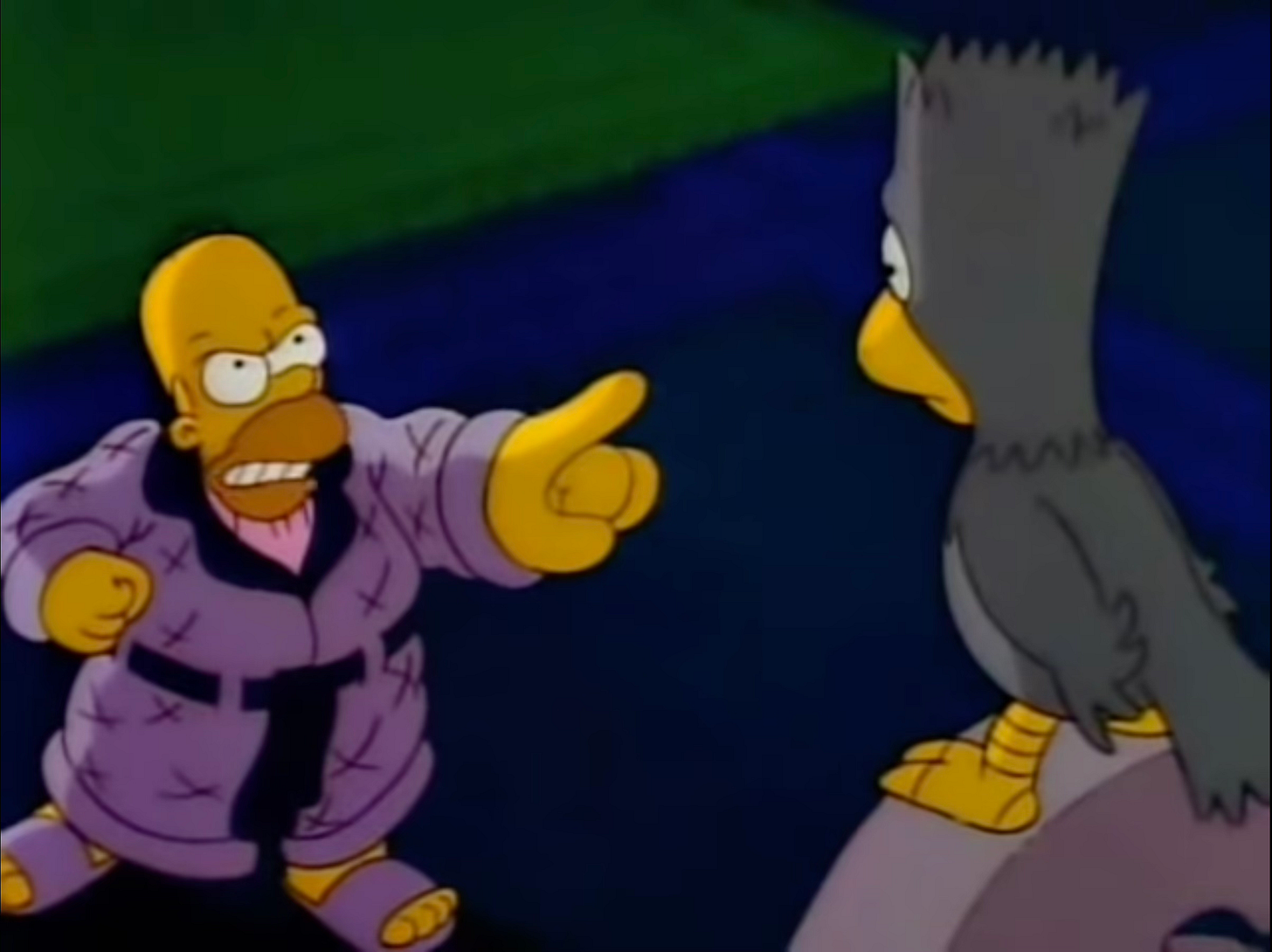When the Simpsons Entered the ‘Treehouse of Horror’
Savor their shorts.
I’m always amazed to discover that The Simpsons is still on the air. It’s now in its thirty-sixth season. Community had famously set the lofty goal of “six seasons and a movie!” The Simpsons have hit thirty-six seasons and a movie—and counting.
I haven’t watched a new episode in over a decade, and I haven’t watched it even semi-regularly in over two decades. But I did watch the wonderful early seasons back when they were new. (I must not be that old if a show I watched as a kid is still coming out with new episodes.)
In 1990, The Simpsons’ second season kicked off a Halloween tradition that continues to this day: “Treehouse of Horror.”
Once a year, the show deviates from its usual format to plunge the family into sci-fi, fantasy, and horror territory. Virtually anything can happen in each Halloween’s three shorts. I don’t recall The Simpsons ever being too strict about its continuity (it couldn’t possibly be), but the “Treehouse” stories take place 100% outside the normal course of Springfield events. The writers and animators get to go wild and throw the usual rules out the window.
But they didn’t go too wild in the early “Treehouse of Horror” episodes. There was always a method to the madness. I can’t speak to the later iterations, but most of the early ones had a clear point or punchline.
They’re called “Treehouse of Horror” because the first Halloween special set its framing device in the Simpsons’ treehouse. Bart and Lisa tell scary stories to frighten each other while Homer eavesdrops.
The first short features a clever reversal of the haunted house trope. The Simpsons move into a home that happens to contain a Native American burial site in its basement, and ghosts soon arise and attempt to scare them off. But the Simpsons choose to stand their ground, and Marge insists that they’ll all just need to learn to live with each other.
Living with the Simpsons. The horror!
Faced with the prospect of a lifetime with this particular family, the house chooses to implode. That’s the sort of punchline that makes these shorts so memorable—when the scary thing is not the scariest thing.
“It chose to destroy itself rather than live with us,” Lisa says. “You can't help but feel a little rejected.”
The second story features the big green aliens, Kang and Kodos, who quickly became a staple of these specials. It also has the best satire of the episode, mashing together the sci-fi tropes of “evil alien stories” and “paranoid humanity stories,” leading the audience to believe they’re watching an example of the former when it’s actually the latter.
The aliens abduct the Simpsons and act extraordinarily nice, treating them like guests of honor. They’re so nice that Lisa gets suspicious, and it certainly looks like the aliens are fattening up the family to eat them. Lisa discovers what appears to be the smoking gun—a book apparently titled How to Cook Humans. But there’s some dust on its cover, so maybe it’s How to Cook for Humans. Or How to Cook Forty Humans.
No, once all the dust is cleared off the cover, we learn the hospitable aliens were actually reading How to Cook for Forty Humans.
Offended, the aliens drop the Simpsons back off at their home. Lisa’s perfectly reasonable suspicions were their undoing.
Kang: We offered you paradise. You would have experienced emotions a hundred times greater than what you call “Love.” And a thousand times greater than what you call “Fun.” You would have been treated like Gods, and lived forever in beauty, but now, because of your distrustful nature, that can never be.
Marge: For a superior race, they really rub it in.
The mark of a good satire is the willingness to pick on everyone. Lisa appears to be the sensible one, the voice of reason, but no, she’s too smart for her own good while the benevolent, advanced aliens are insufferably self-righteous and thin-skinned. Everyone can stand a little deflating now and then.
The final entry casts the Simpsons into the famous Edgar Allan Poe poem, “The Raven.” The key ingredient here is special guest star James Earl Jones. He gives a sincere, dramatic reading of the original poem, which contrasts against the silliness of Homer tackling a raven version of Bart.
It sticks to the original poem while infusing it with bits of Simpsons along the way, adding sight gags and asides without distracting too much from the matter at hand. Poe’s words and narrative provide the guardrails, and Matt Groening and company find room to have fun within them.
“Treehouse of Horror” returned in the third season with a different framing device: candy-fueled nightmares.
One of the highlights is the twist ending of Bart’s nightmare. It’s set up as a Twilight Zone spoof, with the whole town of Springfield living in fear of Bart Simpson and his limitless magical powers. Bart turns Homer into a jack-in-the-box, and Homer’s only hope of regaining his human form is mending his relationship with the boy.
When father and son finally share a loving hug, the real Bart wakes up screaming. Forget the magic—that’s the nightmare. It sums up their dynamic brilliantly. On its own, a jack-in-the-box Homer is just a visual gag that would get old fast, but here, the gag leads to a point.
All of this is a reminder of how clever the early Simpsons years were. Humorous details are all over the place, and the comedic style has influenced plenty of other animated shows, such as Family Guy and Rick and Morty.
Marge: You speak English.
Kang: I am actually speaking Rigellian. By an astonishing coincidence, both of our languages are exactly the same.
I almost want to rewatch those early seasons in full. But there’s no way I’m ever making it to season thirty-six.
One more note, and please excuse me for getting political here, but don’t blame me if Kang wins the U.S. presidential election. I’ll be sure to vote for Kodos.






These episodes include some of the show's funniest and most potently satiric material.
The Shinning is an all time must watch. I think that same episode also includes the classic Treehouse of Horror story when Homer is going back and forth through time.